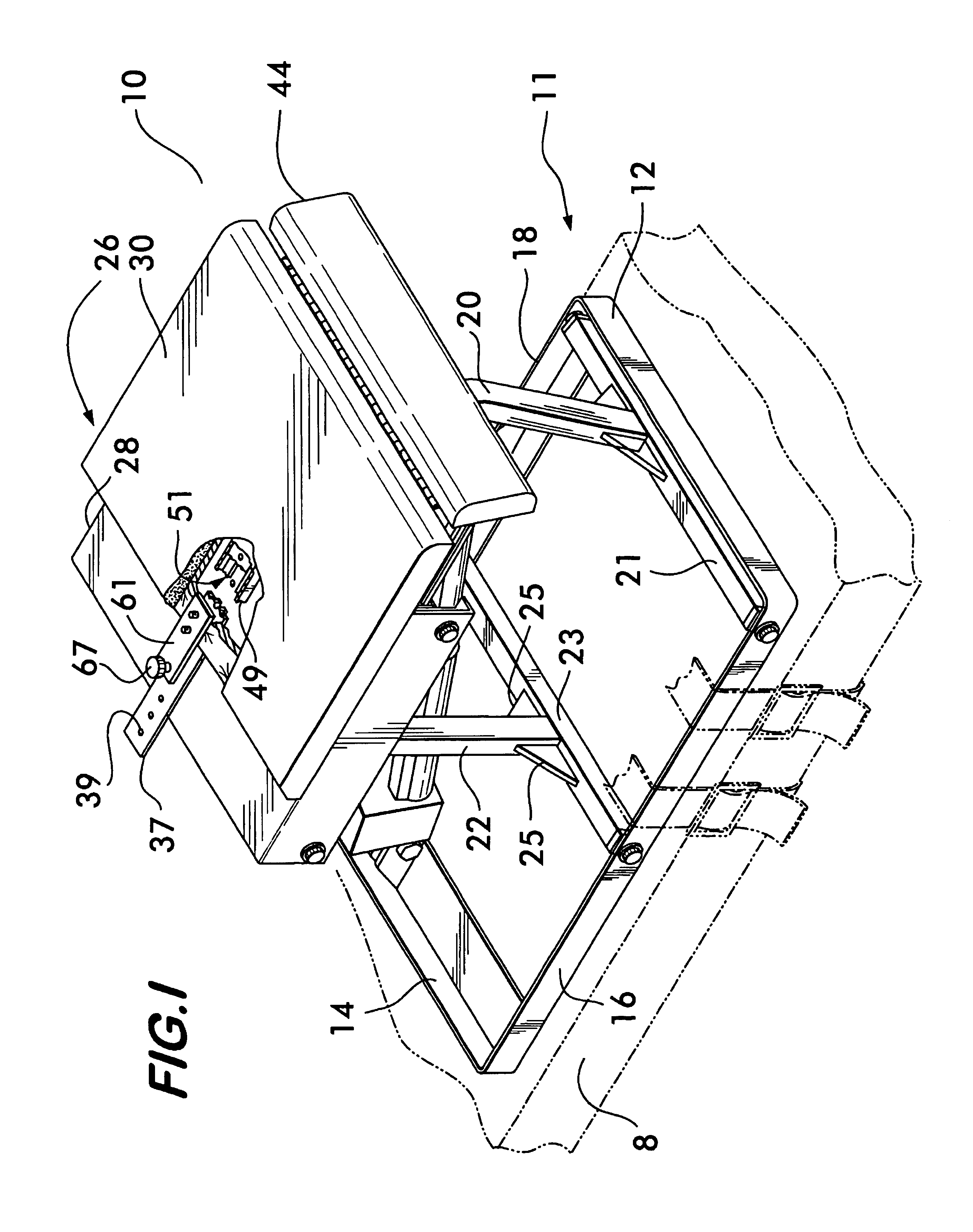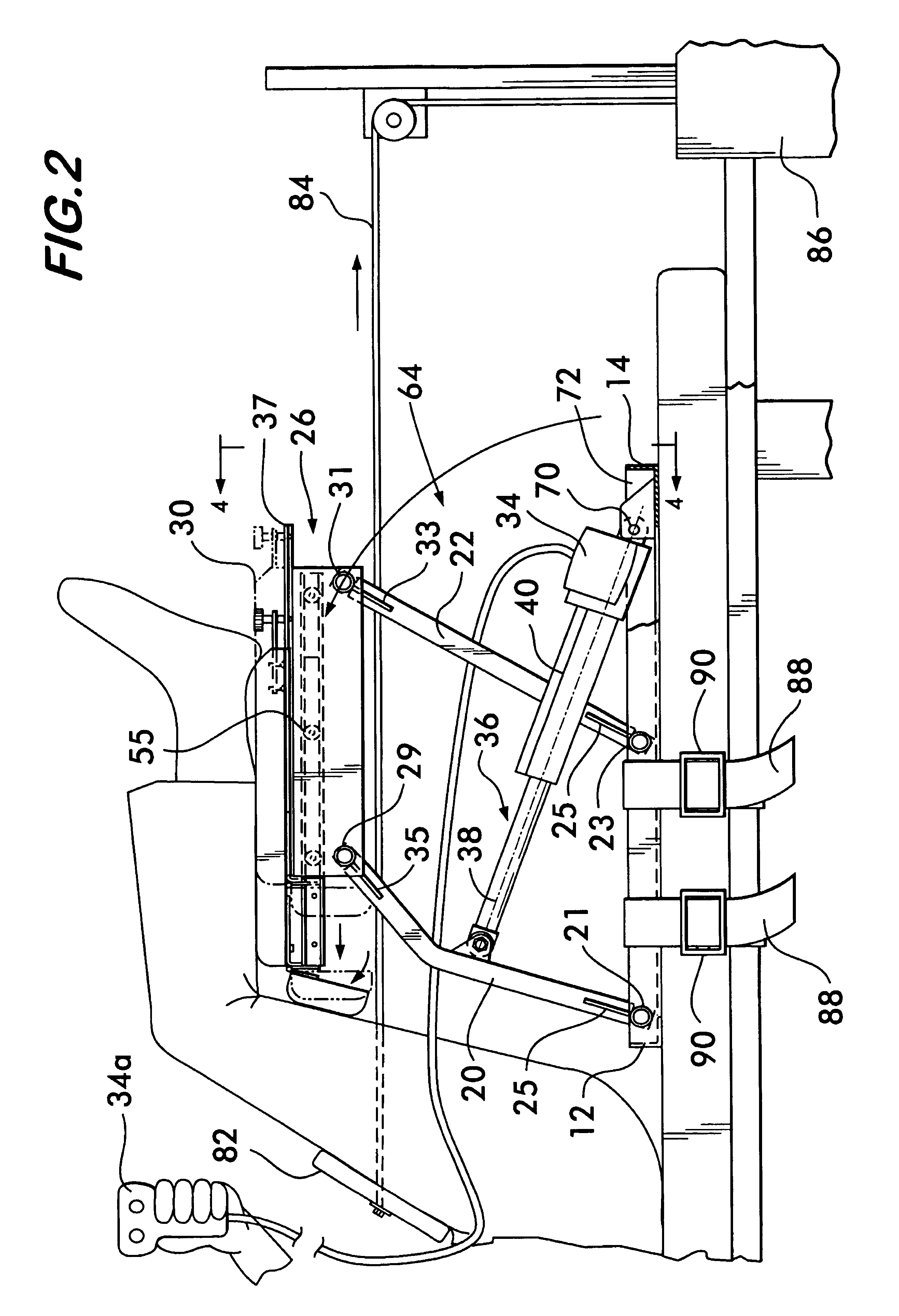Patient positioning device
a positioning device and positioning device technology, applied in the field of patient positioning devices, can solve the problems of difficult tightening, obesity, elderly or pregnant patients, and difficulty in this treatment method, and achieve the effect of convenient transportation
- Summary
- Abstract
- Description
- Claims
- Application Information
AI Technical Summary
Benefits of technology
Problems solved by technology
Method used
Image
Examples
Embodiment Construction
[0021]The patient positioning device 10 is portable and can be easily transported and adapted to a patient's treatment table 8 or any other suitable surface. The treatment table may, but need not be, a Triton Table available from the Chattanooga Group, Inc. The surface may be inclined. As described below, the patient positioning device 10 can be rotated from a lowered position to an elevated position. A perspective of an embodiment of the patient positioning device 10, that is partially cut away at the top, is shown in FIG. 1. FIGS. 2 and 4 illustrate the patient positioning device 10 in an elevated position, and FIG. 3 depicts the patient positioning device 10 in a lowered position. (FIG. 2 depicts the device 10 in an elevated position, but not fully elevated, and FIG. 4 depicts the device 10 in a fully elevated position so that the details of the device are better understood.)
[0022]As shown in FIG. 1, the patient positioning device 10 includes a bottom frame 11. The bottom frame 1...
PUM
 Login to View More
Login to View More Abstract
Description
Claims
Application Information
 Login to View More
Login to View More - R&D
- Intellectual Property
- Life Sciences
- Materials
- Tech Scout
- Unparalleled Data Quality
- Higher Quality Content
- 60% Fewer Hallucinations
Browse by: Latest US Patents, China's latest patents, Technical Efficacy Thesaurus, Application Domain, Technology Topic, Popular Technical Reports.
© 2025 PatSnap. All rights reserved.Legal|Privacy policy|Modern Slavery Act Transparency Statement|Sitemap|About US| Contact US: help@patsnap.com



